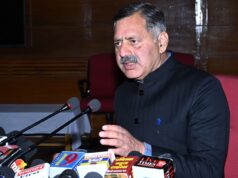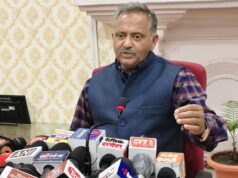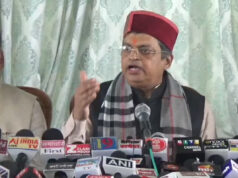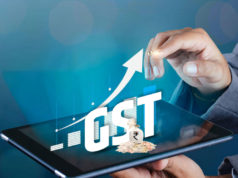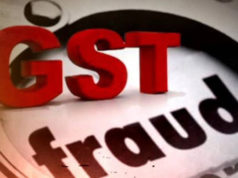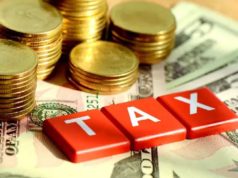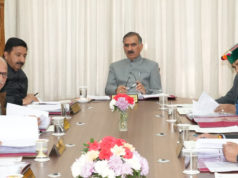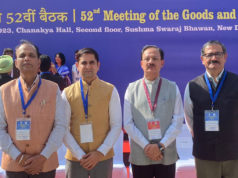Finance Ministers of the GST Council have a lot of work cut out for them in view of the approaching fifth anniversary of GST implementation. The rapidly growing GST revenues collections is a cause for concern in some.

Q2 Average Monthly Collection 5 Per Cent Higher than Q1
September’s gross Goods and Services Tax (GST) revenue collection for sales registered in August jumped by 22.5 per cent on a year-on-year (YoY) basis to ₹ 1,17,010 crore. Total proceeds to Central and state coffers for September 2020 were ₹ 95,480 crore, rising 4 per cent YoY from September 2019’s ₹ 91,916 crore.
Out of the total ₹ 1,17 lakh crore of GST collected for the ninth month of 2021, ₹ 47,345 crore have been generated by intra-state deliveries. Central Goods and Services Tax (CGST) amounted to ₹ 20,578 crore, and State GST (SGST) was ₹ 26,767 crore. Integrated GST (IGST) revenues from inter-state deliveries and import of goods reached a total of ₹ 60,911, including ₹ 29,555 generated by import. Cess revenues were ₹ 8,754 crore with import accounting for ₹ 623 crore of the total cess collection.
Even though the substantial YoY GST collection rise comes on a lower base, the average monthly collection in Q2 of this Fiscal Year of 2021 has reached ₹ 1,15 lakh crore, growing 5 per cent from Q1’s ₹ 1,10 lakh crore.
In a statement, the Finance Ministry of the Union voiced expectations of the rising trend in gross GST collection to continue during the second half of the fiscal year, bringing in even higher results. The growth has been seen as a clear indicator of the fast pace with which the economy is recovering from the shocks delivered by the Covid-19 pandemic and the lockdowns. The contribution of anti-evasion measures, most notably those against fake GST billers, have also been assessed as substantial.
Reforms Deliberated Before Fifth Anniversary of GST Implementation
The legally mandated five-year time limit for the revenue shortfall compensation regime for states will expire in June 2022, on the fifth anniversary of the GSP implementation back in July 2017. The current buoyancy of GST revenues is causing concerns in some experts on the background of this date approaching.
The issue of a possible extension of the GST compensation mechanism was discussed at the recently held 45th meeting of the GST Council. Finance ministers of states like Tamil Nadu, Kerala and West Bengal requested the continuation of the regime beyond 2022.
“While we are broadly, and firmly in favour of the continuation of the compensation mechanism, we are concerned by many of the details,” said Tamil Nadu’s Minister of Finance Thiaga Rajan. According to him, all of the Council Members would need sufficient time to examine and evaluate the various options presented at the 45th meeting. Thus, he continued, decisions on how to proceed forward should be deferred at least until the next, 46th, meeting.
Two Panels of Ministers were formed by virtue of an order dated September 24 with the purpose to deliberate on proposing reforms to the existing Goods and Services Tax framework. A seven-member Group of Ministers (GoM) to be convened under the leadership of Basavaraj Somappa Bommai, Chief Minister of Karnataka, was tasked to consider the rationalization of GST rates.
Another eight-member ministerial panel chaired by Ajit Pawar, Deputy Chief Minister of Maharashtra, is deliberating on GST system reforms.
Special Panel Working on Casino and Lottery Services Valuations
Earlier this year, a special seven-member GoM was established to assess the necessity of changes to the existing legal provisions relating to the valuation of services provided by online blackjack and various other casino games and apps, betting sites and horse racecourses.
The Terms of Reference (ToR) of the ministerial panel originally led by Nitin Patel, Deputy Chief Minister of the state of Gujarat, mandated the GoM to examine casino transaction taxability within the frame of the current legislation and court practice. The Panel should also deliver recommendations concerning the establishment of different valuation methods after assessing how legislative valuation provisions were being administered.
Valuation of lottery services also falls within the scope of the seven-member Panel of Ministers. Currently, lottery tickets bear a uniform GST charge of 28 per cent following a 2020 ruling of the Supreme Court. Before that, there was a differentiation between intra-state and inter-state lotteries which were charged with 12 and 28 per cent respectively.
Nation-wide, the size of all state-run lotteries in India was estimated at ₹ 50,000 crore annually in the last years before the implementation of GST in 2017. Reportedly, the increase of ticket prices due to the addition of the GST charges led to the immediate shrinking of the paper-back and online lotteries’ market organized by the states 3.34 fold to ₹ 15,000 crore. The term “online lotteries” here does not imply the sale of lottery tickets online, but distribution and sale by agents and retailers of paper-back tickets with the assistance and supervision of a central server controlled by the organizing state.
Some of the Current GST Rates May Be Merged
The existing GST system is composed of five key rate slabs: zero, 5 per cent, 12 per cent, 18 per cent, and 28 per cent. A compensation cess varying between 1 and 290 per cent is levied upon certain demerit and luxury goods in addition to the highest GST rate of 28 per cent. Eventual mergers of rates, for example between the 5 and 12 per cent, or between the 12 and 18 per cent slabs, have been deliberated on before, but so far no such decisions have been implemented.
The current consideration of reforms is per a very broad mandate including possible measures like the implementation of special rates within the tax system, simplifying the existing tax structure by merging tax rate slabs, and also an examination of inverted duty structure instances and identification of potential evasion sources.


